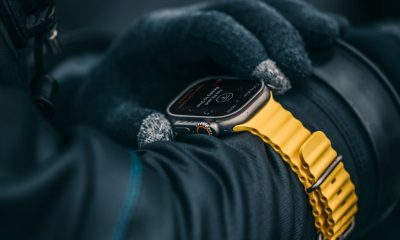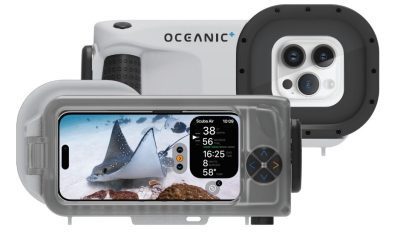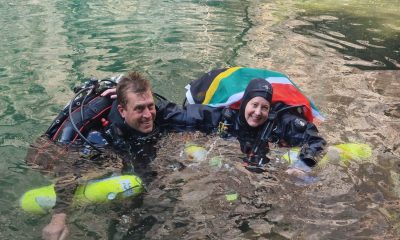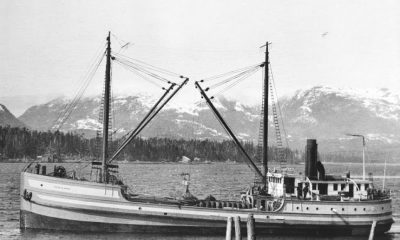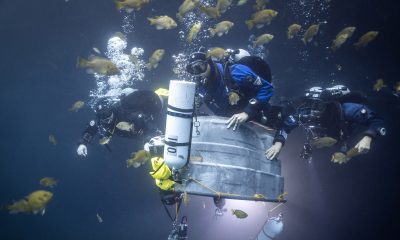Equipment
Will an Insanely Great Dive Watch Attract New Divers? An Interview with Oceanic’s Nick Hollis
Apple made a big splash in diveworld with the recent announcement of its new Ultra Watch featuring Oceanic’s dive computing app. And though the initial implementation is limited to 40m recreational diving, it’s an exciting harbinger of things to come. InDEPTH chief Michael Menduno reached out to Oceanic brand manager Nick Hollis to get the deets.
Interview by Michael Menduno. Images courtesy of Apple and Huish Outdoors
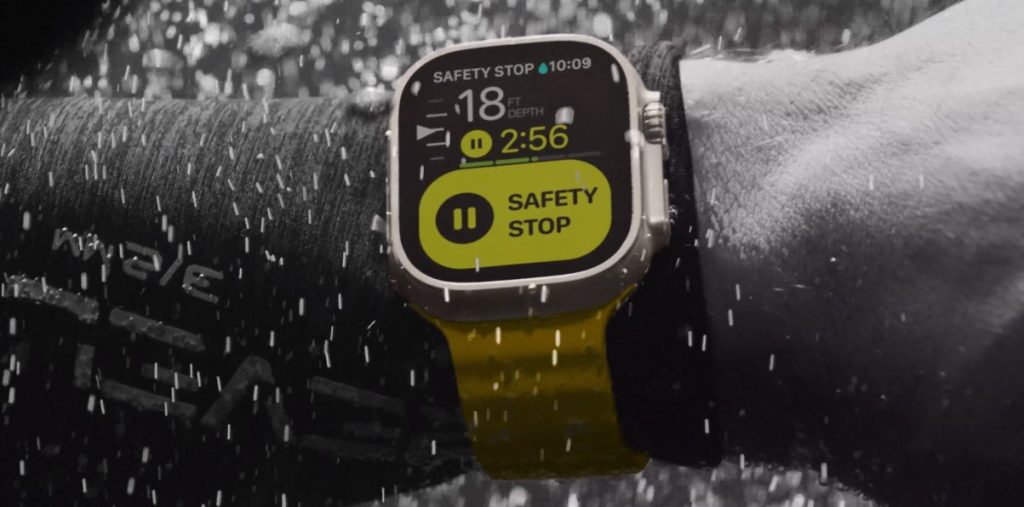
As Oceanic celebrates its 50th Anniversary, the long-running family dive business, which was acquired by Huish Outdoors in 2017, has partnered with Apple Computer to create the first diving computer app for the new Apple Watch Ultra designed for recreational divers. Their hope is that the combination of the Ultra and the new app, dubbed Oceanic+, will be embraced as what the late Apple cofounder Steve Jobs might have called, “an insanely great dive watch,” and will serve to inspire tens of thousands of non-diving water enthusiasts to learn to scuba dive.
Released a few days before this issue of InDEPTH went live, the Oceanic+ app, which is limited to 40 m/130 ft in depth, is easy and intuitive to use, and offers a number of innovative data-rich features that you might expect from an app running on the Apple platform. And if things go as planned, the app may represent the harbinger of things to come.
According to Apple, sometime later this year third-party app developers will be able to request access to the Ultra’s new application program interface (API), providing submerged depth, pressure and temperature data to build underwater experiences for the pool, snorkeling and diving. Could a fully functional, 100 m constant PO2 tech diving app be far behind?
To get a perspective, InDEPTH reached out to TDI/SDI instructor Nick Hollis, who serves as the brand manager for Oceanic and Hollis at Huish Outdoors and has spent years designing and diving recreational and tech diving equipment. Here is what the app man had to say.
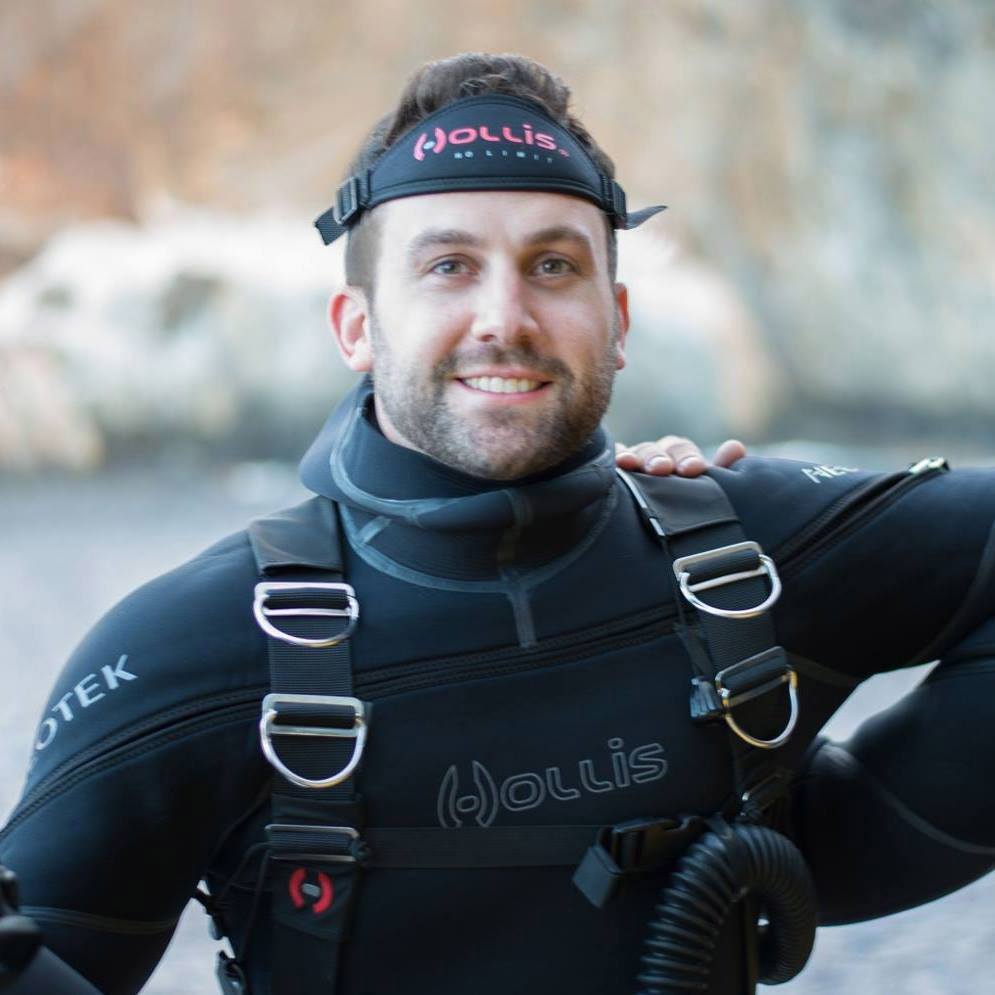
InDEPTH: There are a plethora of dive computers on the market. What did you hope an Apple/Oceanic partnership could bring to the table?
Nick Hollis: I guess, first and foremost, to us the idea of working with a company like Apple, was a really big opportunity, not just for Oceanic but for the diving community overall. Apple has a stage that is much, much larger than diving, obviously, and it provides an opportunity to get more people into the water in general. There are a lot more people that wear Apple watches every day than there are active divers in the world. And we want to make diving accessible for these people, whether they have interest in diving at the present time or not.
Now, if they get the watch, they have immediate access to a bottom timer with Apple’s built-in Depth App and can add a dive computer through the App Store. So, for us, it opened up a big potential to get new divers diving, and that is very, very exciting.
The analyst firm Above Avalon estimates that the installed base of Apple watch users is over 125 million people! No doubt there’s a lot of potential new divers among them!
Did you approach Apple or did Apple approach you?
I can’t say who approached who, but Huish Outdoors is well known in the scuba industry with decades of experience across all aspects of scuba, and of course Oceanic has been involved in many firsts when it comes to dive instrumentation and product design dedicated for recreational divers. Our expertise with scuba equipment, gauges, and gear made us a perfect partner to embark on this effort with.
How long has the product been in the works?
The product has been in the works for several years.
What was it like working with Apple? Do they have divers on their team?
All I can tell you is we are very excited, and yes, there are divers on the Apple team!
Gotcha. So what is the most exciting part for you?
Our sport is relatively small when compared to other outdoor sports, even smaller compared to those who wear an Apple watch. We are most excited about diving as a whole being on a new stage to millions and millions of potential new divers out there. If someone wasn’t interested in diving before, well now they have a reason to check it out. They already own a dive computer!
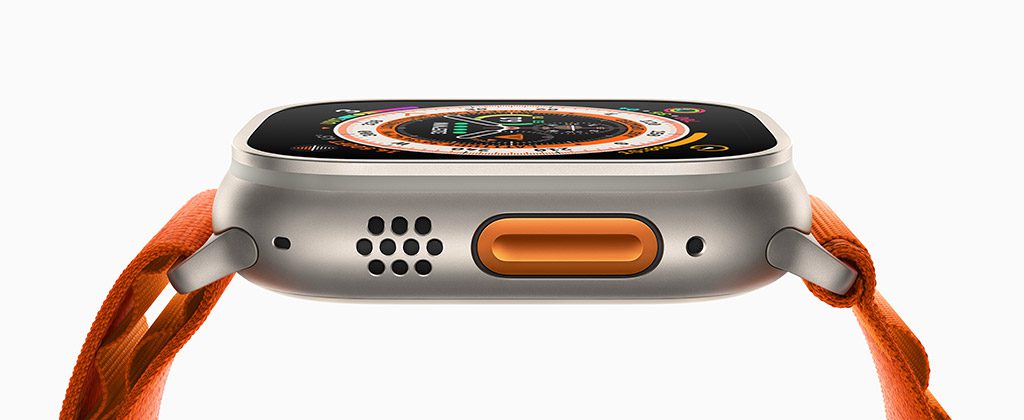
Build it and they will come diving?
Absolutely. We believe this will open diving to a much larger audience, and make diving more accessible, not to mention the innovations with this product and Oceanic + specifically. It is the most popular daily wear product in the world, which can now go diving. This is a good thing for diving.
Yes, it is! Why Oceanic +?
That’s our brand designation for the Apple dive computer app and associated products. The “+” stands for what this does to augment the consumer experience beyond a traditional dive computer.
Got it. You called the watch a daily wear product that you can take diving. Funny, I have friends who have the [Shearwater] Teric or the Garmin [Decent] or whatever dive watches, and they wear them on a daily basis I suppose as an act of dive-readiness. I own a Teric, but I only wear it to dive. I wouldn’t think of giving up my Apple watch—it does too many things that I need! So now, Oceanic is giving people the opportunity to have both.
Exactly. We also sell some dedicated dive watches like the Oceanic Geo 4.0, and the Geo Air, but they are dedicated hardware compared to the Apple watch. The Ultra has so many features that we use every day, from making phone calls, handling text or paying for your Starbucks, let alone access to a bazillion apps. There’s not a dive computer on the planet that can do all the things that the Apple Ultra does and also go diving.
I get it—the goal to create an insanely great diving watch! Ha! The late Steve Jobs would no doubt be down for that.
Ironically, I actually bought my first Apple watch to track my swim workouts—there were several great swimming apps in the App store. Then I got hooked on the watch. I can imagine that people may well step up and buy an Ultra so they can take it diving.
That’s the idea!
I heard that the Ultra’s pressure sensor is limited to 40 m/130 ft in depth or 40m and change, which would mean that Apple would have to upgrade the sensor for a deep diving tech app, but I have been unable to confirm that with Apple. But I do understand that the Oceanic+app is a “no-stop” recreational dive computer that’s limited to 40 m/130 ft? Do I have that right?
Actually, the Oceanic+ is a fully featured dive computer app with decompression information available should the diver exceed their No decompression Limit (NDL), however it is designed for the recreational diving to 40 m. Likewise, the Apple Watch Ultra is water resistant to 100 m/326 ft under the EN13319 standard but is limited, diving wise, to 40 m/130 ft.
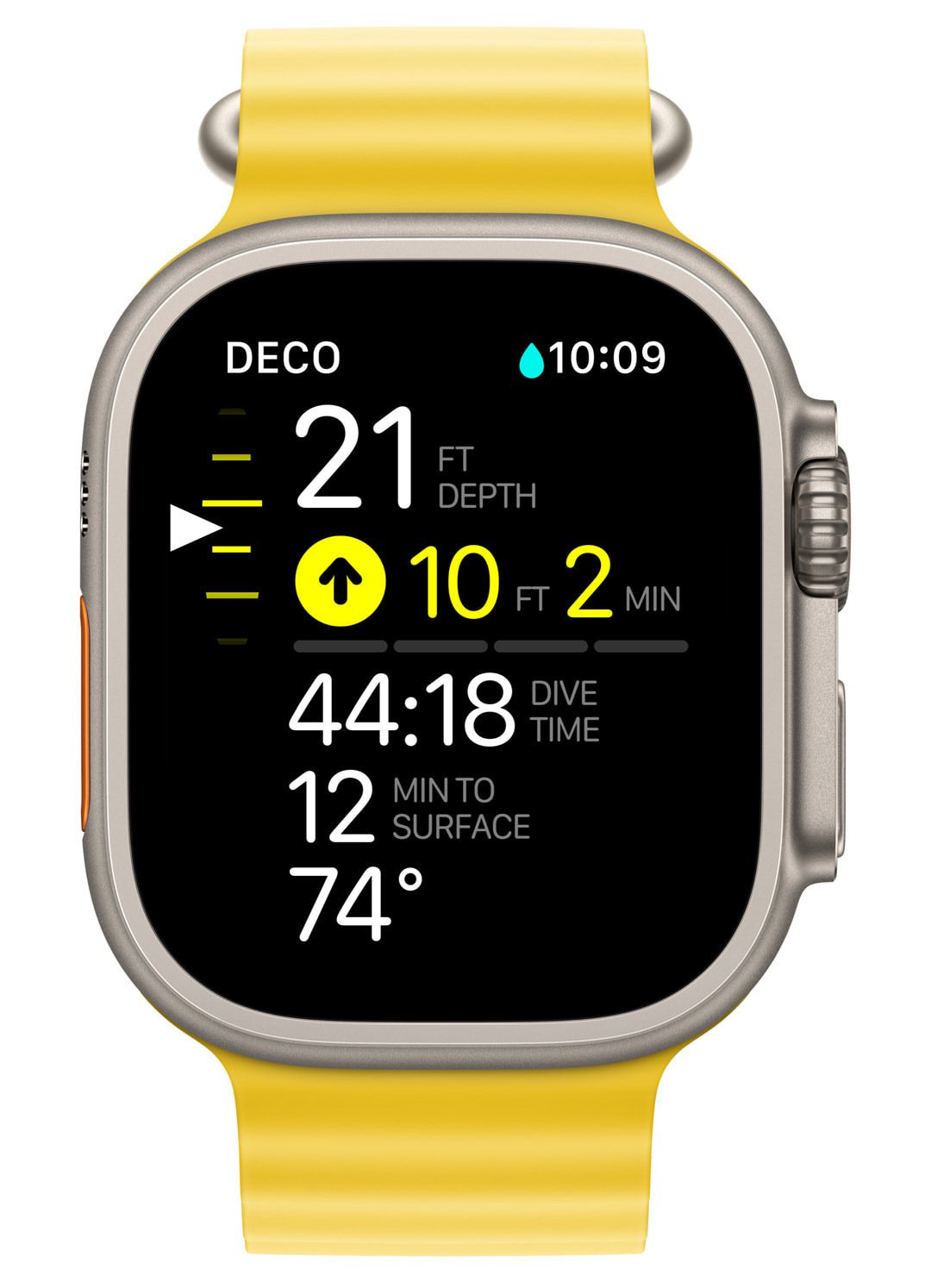
Oh yes, of course, it provides single gas decompression information as well. If a recreational diver overstays their NDL, the computer will provide their decompression requirements. Right. It’s a recreational dive computer! How does it handle the depth limit? What happens?
At 40 m you get an alarm that says you’ve exceeded the maximum depth of the device. At 44 m the Apple Watch Ultra is not able to track No Decompression Limits (NDL) information any longer because depth information is not available. Once you go back to 40 m or shallower, the app resumes to display your depth and time, and it will also show NDL if you haven’t exceeded 44 m. Once you go below 44 m however, it stops tracking decompression status for the dive.
Because there is no depth information. Got it. I was glad to see that the app handles nitrox. Was there any debate at all about that or was it just like a no-brainer?
I think if you had asked me, I don’t know, 20 years ago, we’d probably say not so much. But these days it is really a market requirement for dive computers. We knew from the start, it had to have nitrox!
Right?!? As the GUE meme goes, “Compressed air is for tires.” What range of mixes does the app accommodate?
It can handle nitrox mixes up to 40%, and can be adjusted on the watch, right before the dive.
Are you looking to add “air integration,” err “gas integration,” the ability to have tank pressure wirelessly on the watch?
Yes, it is something that we are looking at, but we don’t have wireless integration on this first release.
I am guessing that the Oceanic+ app running an Apple device is also more user friendly, i.e., easier to use than a traditional dive computer.
It is. Most dive computers today require a series of button presses to navigate the menus and functionality. Not so with the Oceanic+ app. What’s really unique is that it doesn’t require any button presses at all, and users who have an Apple device will easily understand how to use and navigate the app, because it works like most Apple products. Just like you swipe up on your phone to be able to access certain features, you swipe up on the watch using the digital crown to access all your critical dive information. So that’s a really unique feature.
We also wanted to make sure that the information was easily accessible and understood by the user, given that this is aimed at the recreational market. So, there are user-enabled notifications while diving that include color-coded prompts for things like safety stops, ascent alarms and those sorts of things, that provide a really easy-to-see visual alert for the user during the dive. And it really doesn’t require the user to navigate through the app during the dive. It’s all prompted for the most part.

Sweet.
Yes. It’s really easy to use and really intuitive. That’s one of the things we are most proud about for this target market. The other great thing about having an app versus a dedicated dive computer, is that the software can more easily and frequently be updated and new features added.
Outside of the actual dive computer itself, it looks like you’ve added useful features to the dive logging function on the app.
We have. As soon as you end your dive, all of the information is automatically visible on your watch. You immediately see a dive summary with your dive settings and profile, and a map with the GPS coordinates of your entry and exit point. This dive log is automatically synced to the companion app on your iPhone, which if you press on way points on the profile you can see your depth at that point, NDL, time, water temperature, at that point. You can also click on any of your dive summaries and pull up daily, weekly, and annual stats.
This information also populates a dashboard which is a history of all of your dives. It’s a really cool feature that summarizes everything, kind of like the dashboard on a car. So, it’s pretty detailed, which is awesome.
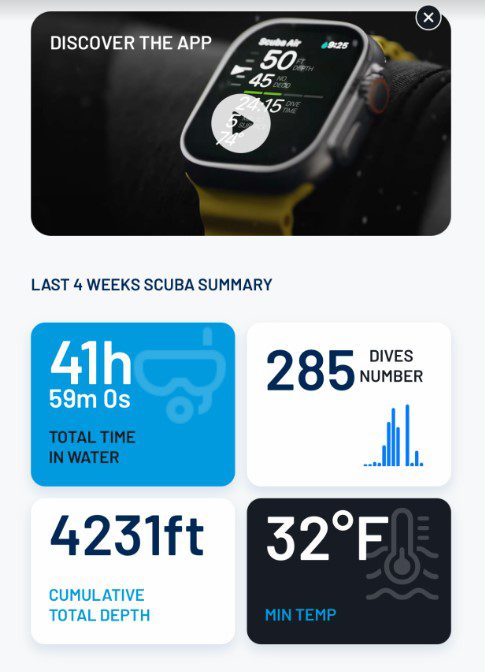
Nice! It looks like the app also has a robust location planning function.
The planning ability is incredible. It may be one of the coolest features of the app. Normally, if you are planning to go diving at some location, you google maritime forecasts for wave and tide data and water temperature, and or call the local dive store or email a friend. But with Oceanic+ app, there’s an API to another program that feeds all that information automatically into the app. You can click on any beach or general dive location in the world on the map, and it will give you real time data on weather and water conditions, along with a three-day forecast.
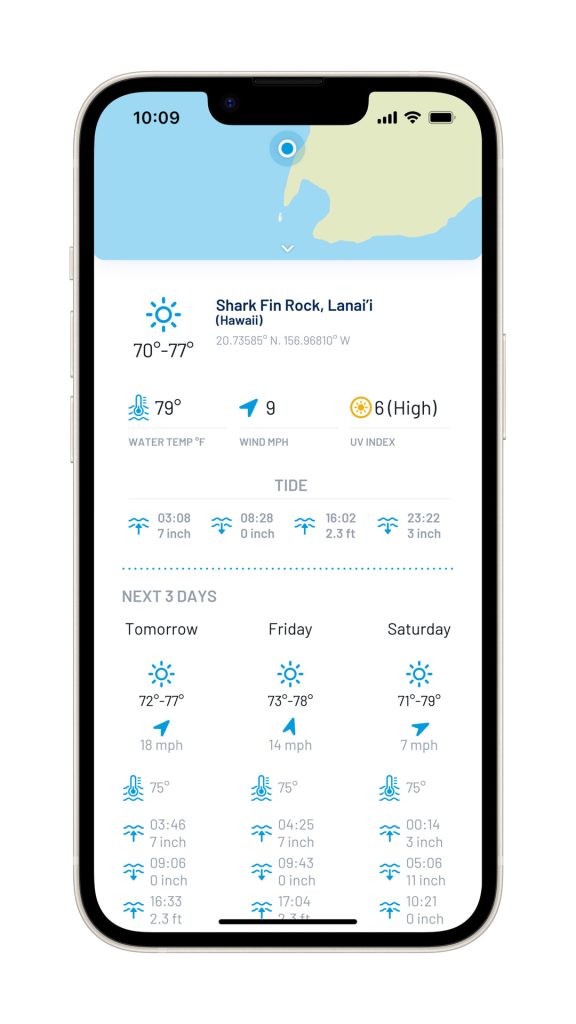
Given all the instrumentation that Huish brands like Oceanic and Hollis put out, I assume that Huish has its own inhouse software team. So you basically sat around a table and dreamed up this stuff?
We do, and we did. There wasn’t some standard program we embedded. We had to come up with the ideas and logic to build the app. We tried to include all the things that divers want to see whether they’re a beginner diver or advanced.
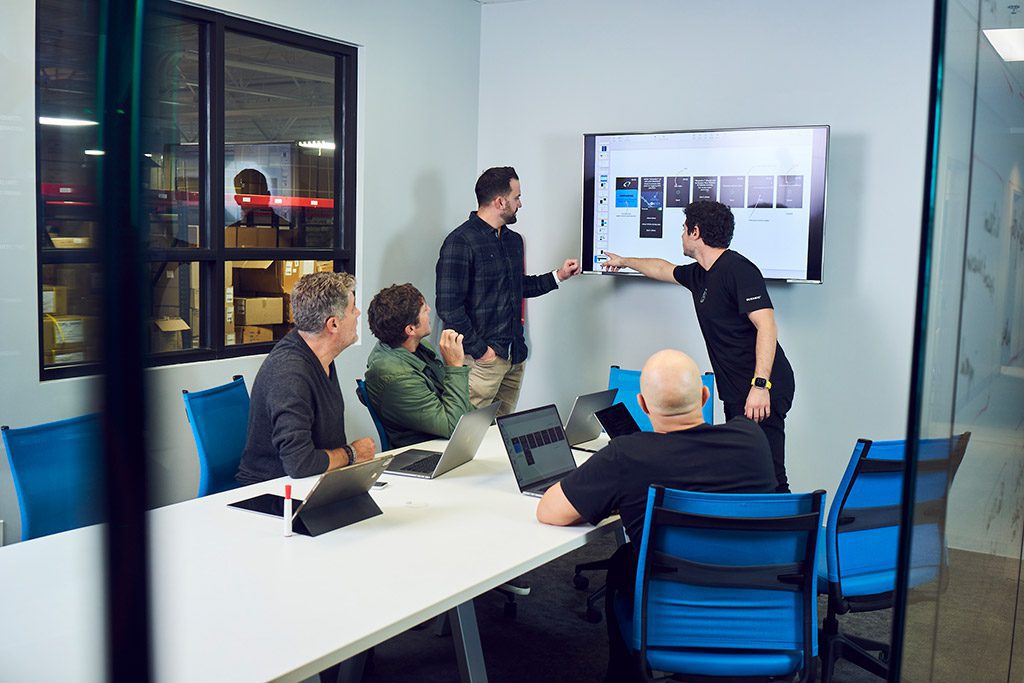
Talk to me about pricing. How does buying an Ultra and Oceanic+ app compare to buying a dive computer?
In the States, the Apple Watch Ultra retails for $799, compared to say a $1,000 dive computer. Of course, as we talked about, it does a lot more than a dive computer. Then you need a subscription plan for the Oceanic+ app for diving. For the full version of the app, paid subscriptions run $4.99 a day, $9.99 a month, or $79.99 annually. There is also the free version for snorkeling which includes many of the same dive features such as depth, time underwater and your logbook, just not NDL information. And because Oceanic+ is an app, it has the potential to evolve over time and add new features compared to a dedicated dive computer which is a lot more static.
So how does this work for your dealers? Divers will buy the watch from Apple or Amazon and the Oceanic+ app from the Apple App Store. What happens to your dealers?
It’s a good question. We wanted to make sure our dealers are involved in this. So when people who are water enthusiasts and outdoor lovers, who bought an Ultra and want to learn to dive, go to a dive shop, our dealers can talk to them about dive training and the app, and have complimentary products to offer them, like the dive wrist straps, a unique dive console that holds the watch with a pressure gauge, and a special iPhone housing, which will be released next summer, that turns the phone into a dive computer and an underwater video camera.
So the Oceanic+ app can be running both on the watch and the phone simultaneously?
Right. So anybody who has the app can also take their phone as their secondary device and benefit from many of the phone functions, specifically the camera. The dive information is shown in the same format as on the watch in the corner of your camera display.
Very cool!
Our main goal with Oceanic+ is to make it easy for people to go diving. Our dealers will have a lot to discuss with them and can steer them into a Discover Scuba, and or an open water course, and provide the additional equipment and accessories that they will need. So, there’s a lot of really cool things happening at the dealer level to capture this new audience.
What would you like the tech diving community to know about the Oceanic+?
I would encourage tech divers who may already own or are considering the Ultra to check out Oceanic+. It has a lot of cool features, and since it’s an app, new features will be added over time. As I mentioned, it is a fully functional dive computer to 40m with decompression information.
The app will support a nitrox deco dive, but it won’t take into account adding oxygen, for example, on your 6m decompression stop.
That’s right.
Should tekkies expect to see an tech diving app from Huish sometime in the future?
Anything is possible. But right now, we are excited about and focused on the recreational market, and making a positive impact on new diver acquisition for our sport.
Of course, Apple would have to add that 100m pressure sensor. Ha! I am just kidding Apple. The Oceanic+ app was released 28 NOV and is available now.
That’s right. It’s ready for download.
Great! I wish you and the team a lot of luck! Nick, before we go, I also want to acknowledge that this year is Oceanic’s 50th Anniversary. Wow. That’s a huge accomplishment for you and your family. Huish Outdoors has got to be proud of that. You’ve built an innovative and trusted, global diving brand. And you’re still at it! Congratulations!
Thank you.
Dive Deeper
Medium: Your Apple Watch is Now a Full-Fledged Scuba Diving Computer by Darcy Kieran
DIVERNET: OCEANIC+ TURNS APPLE WATCH ULTRA INTO DIVE-COMPUTER By Steve Weinman
Apple: Apple Watch Ultra: Technical specs
Oceanic Worldwide: Oceanic+

Michael Menduno/M2 is InDepth’s editor-in-chief and an award-winning journalist and technologist who has written about diving and diving technology for more than 30 years. He coined the term “technical diving.” His magazine “aquaCORPS: The Journal for Technical Diving” (1990-1996) helped usher tech diving into mainstream sports diving, and he produced the first tek.Conferences and Rebreather Forums 1.0 & 2.0. In addition to InDepth, Menduno serves as an editor/reporter for DAN Europe’s Alert Diver magazine, a contributing editor for X-Ray mag, and writes for DeeperBlue.com. He is on the board of the Historical Diving Society (USA), and a member of the Rebreather Training Council.



















